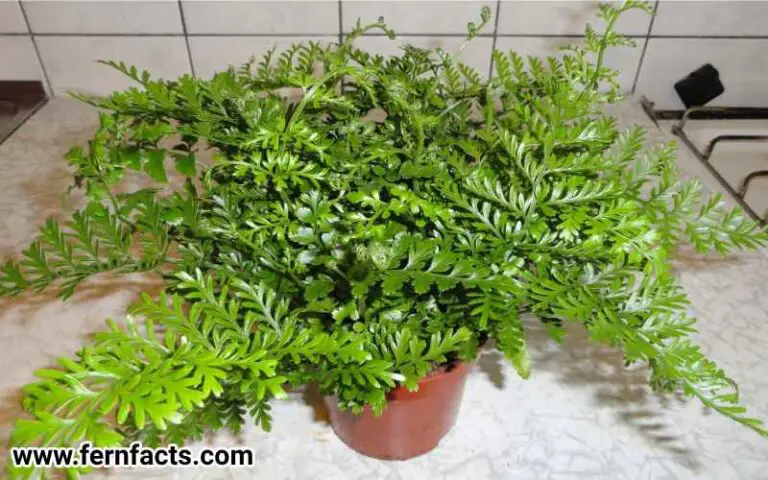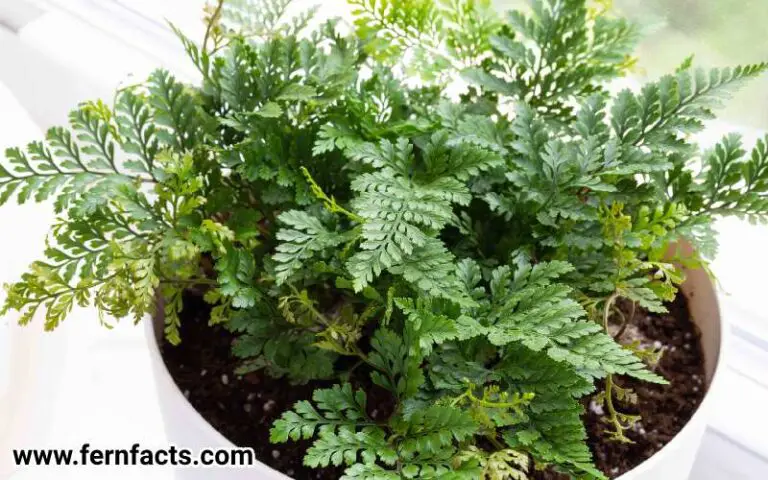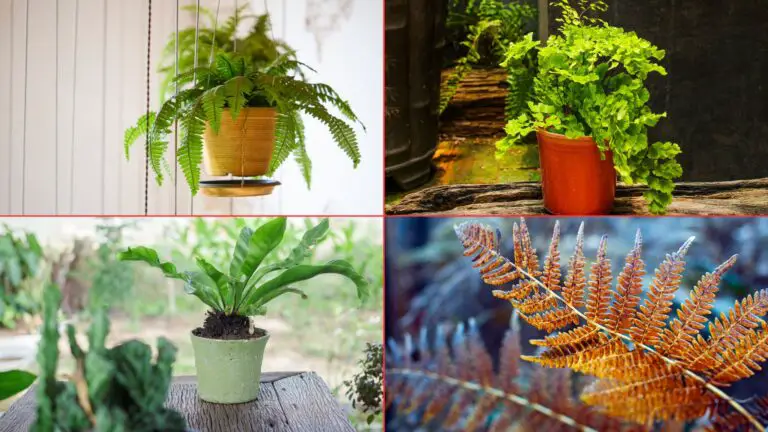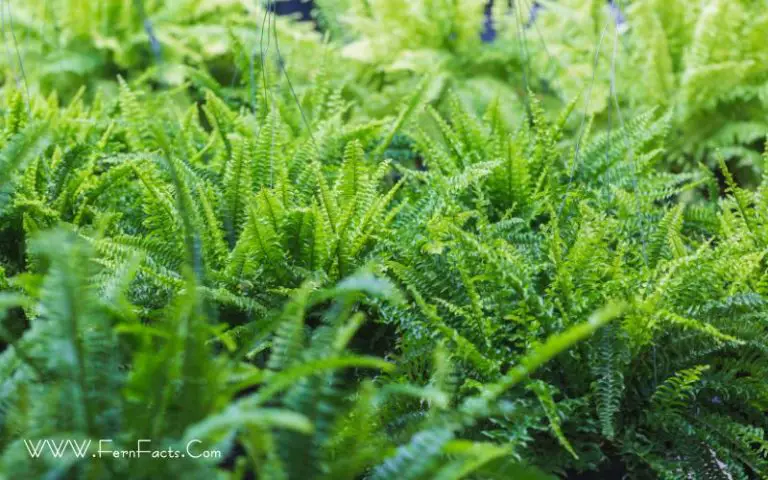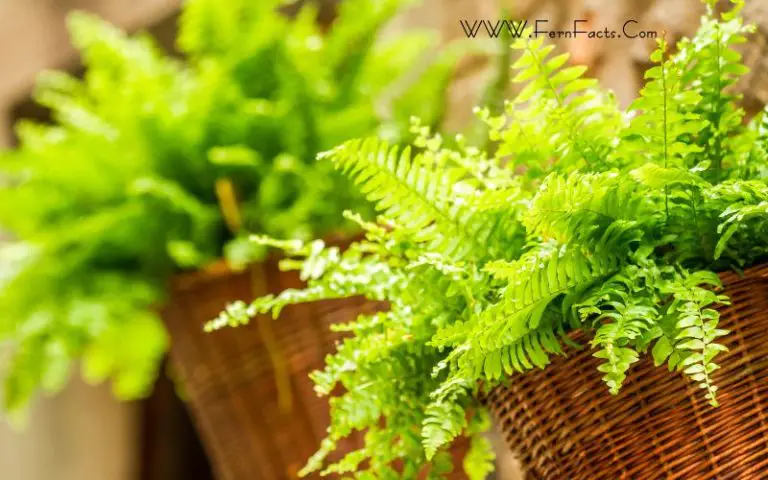All About Blue Oil Fern (Microsorum Thailandicum)
Ever heard about Blue Oil Fern? Just like the name suggests, these blue oil ferns are vibrant bluish-green fronds that you cannot take your eyes off.
If you intend to know more about these blue oil ferns, then follow this article from the start to the bottom. Here, I’ll be discussing these blue oil ferns’ characteristics and their growing requirements.
Similarly, I’ll also share their propagation process so that you can double triple the amount of plants in your house garden and make a vibrant colored atmosphere in there. So let’s get started.
Overview of Blue Oil Fern
- Botanical name: Microsorum thailandicum
- Common names: Blue oil fern
- Family: Polypodiaceae
- Plants: Perennial
- Native Region: Southeast Asia
- Shade requirements: Semi, full shade, LED
- Size: around 7 to 8 inch
- Soil type: moist and well-drained
- Foliage color: blue, green, bluish green
- Temperatures: 18°C to 24°C (64°F-75°F)
- Toxicity: non-toxic
Blue oil ferns are epiphytic, sometimes lithophytic ferns that are widely distributed in southeast Asia including Thailand, China, and Vietnam.
Basically, Thailand is their native habitat where these blue ferns are mostly visible. These ferns are renowned for their exceptional Blue fronds which ultimately intensify with ideal conditions of shaded places, low light conditions, and humid atmospheres in tropical areas.
Their fronds are mostly like leathery straps which can grow around 5 to 20 cm long and 2 cm wide. The fern’s upper level of fronds are in bluish color or metallic blue.
Similarly, the opposite sides of the fronds are in the bluish-green color. And so, they grow sporangia underneath, nearly to the tip of the fronds.
Further, they can equally be grown as indoor plants, in hanging baskets, balcony as well and landscapes with the correct conditions. Having said that, they are very easy to grow.
However, their growth is very slow like other fern plants. Sometimes it took several years to see their growth. You might feel Sometimes that your Blue oil ferns are not growing or not improving at all.
But all you need to have some potential and patience to grow these fern. Because of their striking blue fronds, they are also famous ornamental plants in the plant world.
Blue Oil Fern Growing Requirements
Let’s look out the basic requirements in order to grow these Blue oil ferns so that you can have astonishing vibrant indoor plants in your home garden.
Shade Requirements
Blue oil fern thrives in indirect shaded to full shaded places. Mostly, they prefer semi shaded to fully shaded places with a good air circulation.
So, try to place them in such a place where their room ventilation is sufficient so that your blue oil ferns can thrive. In general, they can grow with a low to moderate amount of lighting.
And so, they can also grow under LED light around half of the day. Try to avoid direct sun exposure which can burn their charming bluish green fronds.
In other ways, you can give them 40 to 50% indirect and filtered sunlight with a good ventilation room.
Watering Requirements
Likewise many other ferns, these Blue oil ferns prefer moist and damp conditions. Never let the water sit on the plant’s soil surface which can lead them to have root diseases.
Just simply water your plants when the soil is completely dry. That’s why, try to keep a decent amount of watering. You can mostly water in the period of 3 to 5 days a week.
Occasionally, mist your plants once or twice a week to provide them sufficient hydration.
Soil Requirements
Further, These Blue oil fern need well drained, moist soil for thriving. They also enjoy rich humus soil that will provide them with all the nutritions.
So, try to make a strong potting soil with 40% potting soil, 20 to 25% cocopeat, vermiculate, orchid barks and 4 to 5% perlite.
All these essentials will give your string rich humus potting soil that can provide all the nutrients to the plant’s body.
Temperature and Humidity
Well, these blue oil ferns prefer 18°C to 24°C or 64°F to 75°F to thrive. Also, they enjoy a high humidity atmosphere.
Since they prefer high humidity, you can mist or use a humidifier to increase the humidity around them.
Fertilizer
Since they are slow growing fern, that’s why much intensified feeding will not be required for them. On a basic approach, you can simply feed your Blue oil ferns once a year.
Or you can feed them twice a year during their growing seasons. Use a simple diluted fertilizer during those times. Try to avoid over feeding or over fertilizing as they are slow growing fenr.
Keep that in mind that excessive fertilizing can kill your plants.
How to Propagate Blue Oil Fern
You can easily propagate these blue oil ferns at your house. You can propagate these ferns with two easy processes. Follow the simple steps given below.
Rhizomes Division
During early spring or late fall time you can start the propagation process. Before starting the process, take scissors, knife; sterilize them. Wear gloves to reduce any health risks.
Then simply, dig up the whole plant from the pot or ground. Later on, divide the rhizomes from the main plants with scissors or knife. Or else, you can use your hand to divide the rhizomes as well.
Assure that each side has the equal sort of roots. Now prepare the new potting rich humus soil with well drainage that would be perfect for blue oil ferns to thrive.
Then replant every section into a pot or container or your garden land. Fill the remaining pots with the soil and give water to your ferns.
Spores Collection
Though Spores collection is quite a complicated process to do. But if you have potential, you don’t need any professional hands. You can do it by yourself.
First, choose your mature plants which have ripe spores underneath. In general, it will take 2-3 years to become mature for any plant. So take your mature plant and check whether the plant has ripe spores underneath or not.
Then take a white paper or a piece of cloth to collect the spores from underneath the fronds. After collecting the spores, prepare the potting mix soil. Now take a small container or plastic pot; fill the pot with your new potting soil.
Later on, spread the spores on the surface of the new soil and water the soil surface. You can also mist instead of direct watering. Just make sure the soil is moist and hydrated.
In the passage of time (about 3 to 4 weeks), you will see the new growth. Later on, transfer new young shoots into a pot when they are little established. Then follow the basic growing requirements for having flourish blue oil fern.
Wrap Up
In short, Blue oil ferns are one of the astonishing vibrant bluish green colored ferns that are highly used as ornamental plants. Because of their vibrant bluish green fronds, they are one of the listed indoor plants for many gardeners’ choices.
Since they are slow growing fern, plating and caring for them is pretty easy and affordable. You can easily grow these Blue oil ferns under low to moderate lighting, high humidity and moist soil and that’s all.
They don’t even need intense fertilization either. By giving them their ideal conditions you can bloom these ferns at your house and make a vibrant coloration environment among your other plants.


